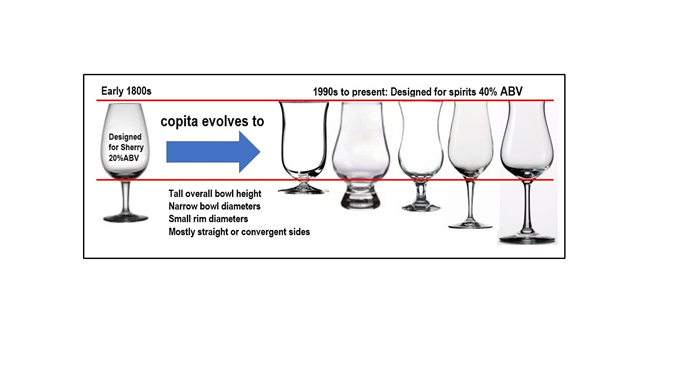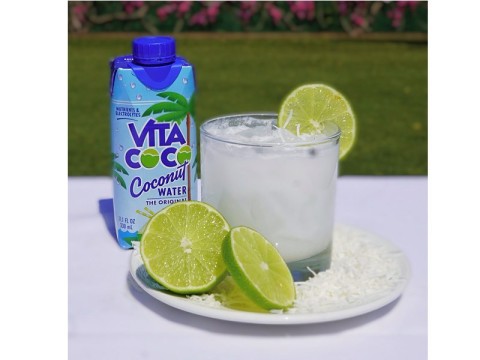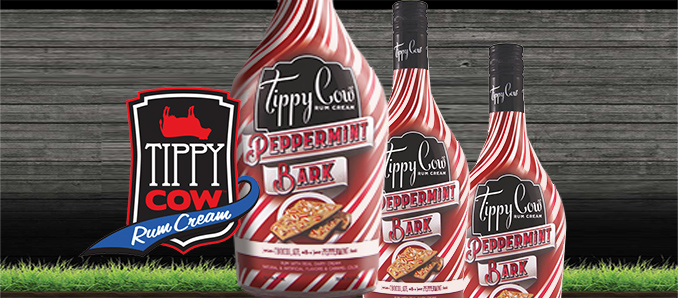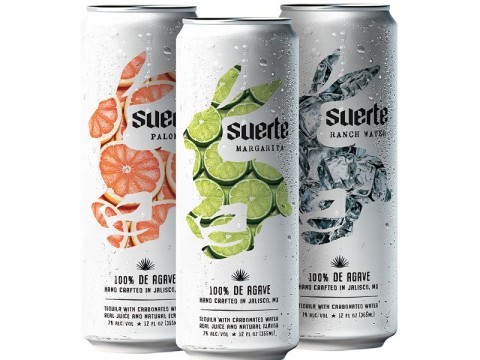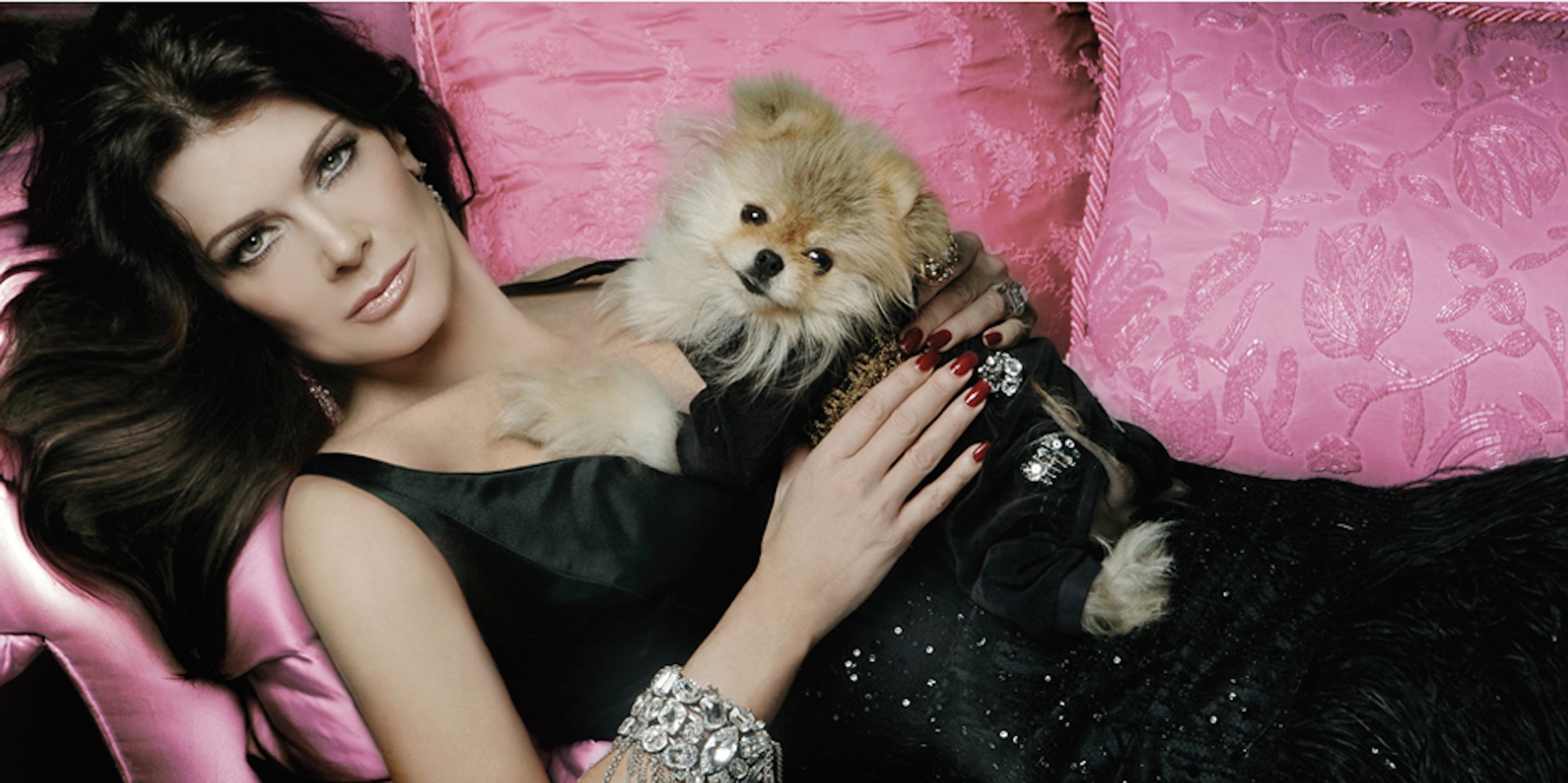Sad: Truth-twisters and ignorance run rampant in the spirits and glass industries, particularly in whisk(e)y. Sadder still; for decades the whisky industry has misled the general drinking public by clinging to their own version of sensory perception, devised to perpetuate a contrived tradition of glassware style and supported by a reluctance to embrace science. Saddest of all: The spirits industry shepherds a flock of male, straight spirits drinkers who seldom question the norm and settle for an industry’s illogical explanations which run counter to scientific knowledge and happy to belong to an international drinking club. The result is a meme which defies true sensory science in favor of the industry’s long revered fraternal emblem, the widely used tulip glass. Neither the spirits industry nor the spirits drinker questions the tulip glass for scientific truth, to the detriment of both, creating a stealthy trap which eventually demands that the spirits lover make a choice between social acceptance and a science they don’t really want to understand.
Ever heard these? “The alcohol carries up the other aromas” — from a leading glassmaker who should know better but desperately needs to validate a functionally inadequate design. “Water opens up the whiskey” – because scotch legends Jim and Michael said it doesn’t make it true, as they never understood evaporation and surface tension inventing their own logic rather than applying simple high school physics. “Biomimicry” is misused and conveniently redefined by another glassmaker to give a false and misleading sense of scientific accomplishment to an unscientific product. “The straight sides and small rim opening keep the ethanol down” — yet another glassmaker who conveniently forgot the lightest compound in a spirit is ethanol, and nothing keeps ethanol in any glass except a lid.
How about these? “Legs are an indication of quality” — repeatedly used by spirits educators who do not know that legs (tears) are caused by the cohesive properties the water contained in an ethanol spirit, and dependent more on glass surface quality than spirit quality. The “tongue map” disproven well over forty years ago is still taught as an important lesson in many sommelier courses and a major glassmaker who punctuates glassware demonstrations with the power of suggestion, overt and subliminal. It’s time for drinkers to wise up and question these myths to bring credibility to accurate sensory evaluation and move toward an enlightenment. It’s also time for the spirits industry to stop ignoring science and take responsibility for a more holistic approach to product design and development. The spirits industry seems to be aware in every other case except glassware.
Each mythical statement cuts deeply against the grain of known, proven basic physics, chemistry, and biology. There are many common myths believed to be true by spirits (and wine) drinkers who are completely unaware of how these beliefs control their perception and understanding of spirits. To a few enlightened spirits drinkers, it’s readily apparent that the spirits industry has played the wrong card. Lately there are many more rolling eyes in the audience when brand ambassadors speak the same old misconceptions.
The spirits and glassware industries have long ignored scientific discipline because it directly counters their chosen, easier path to market tired old products. Too bad, because that makes them irresponsible, brands them as greedy, and eventually they become losers as the public becomes more aware of the truth. Do they mislead with forethought and intent? Not in the beginning, but presently the commitment at all levels of the spirits industry to defend the non-functional tulip glass indicates otherwise. Perhaps it is too difficult to stop a driverless train speeding down the track with all on board hoisting the same glass in a worldwide drinking toast, oblivious to what they actually have in their glasses.
Background and History
Early on, the scotch industry supported a philosophy of “one spirit, one glass” in the first serious attempt to unify straight spirits drinkers with a unique, identifiable glass, and that alone served their purpose well for decades. As a matter of fact, the tulip glass was extremely important to the early successes in marketing scotch as it brought together groups of drinkers interested in learning more about the spirit, and attracted new members curious about the special sense of camaraderie among scotch drinkers everywhere. In addition, it placed everyone on the same page for making comparisons by using the same vessel. That fact is now much less important as professional sensory testing clearly points out the flaws and defects of tulip shapes.
Whisky clubs the world over proudly display a graphic version of their “world scotch drinker identity badge glass” on club logos and many members believe that they have arrived at the entry gate to the exalted inner temple of fraternal understanding when they accept their logoed tulip glass. All club tastings are taught from the same good book of tulip glass tasting and nosing rules, clearly ignoring sensory science. To carry that message far and wide, all brand ambassadors, distributors, and spirits executives are trained, through formal instruction, peer pressure, or fraternal osmosis to wield the tulip glass, and without the bat of an eye they sneer at any alternative and proceed to defend the tulip along with myths and untruths regarding sensory evaluation.
Other spirits makers assumed that if it was good enough for scotch, it’s probably good enough for bourbon, Canadian whiskey, and Irish whiskey, and now we see more tulips used for rum, tequila, and even baiju. The meme of the tulip glass has spread across different spirits with the logic that if it’s good for one 40%+ ABV spirit it’s probably good for any other. The logic of a single glass for all spirits is irrefutable because high ethanol content reduces all spirits to a simple common denominator – how to handle the over-abundant, olfactory sensor-numbing ethanol. The philosophy is right, but the tulip glass is not the right vessel.
Glassware manufacturers, eager to please the spirits industry and gain support for new styles, consciously decided not to stray too far from basic tulip shape, size, and dimensions and through many different styles managed to keep sales up, further entrenching the tulip-style as the spirits drinkers’ standard glass. Having revolutionized the glassware industry in the early 1960s with wine glasses designed to allow the nose to immerse in aromas, surprisingly, manufacturers failed to research spirits, choosing to ally with the scotch industry who were already well down the path to ensconcing the tulip as an icon. Sadly, the accepted spirits glass tulip shape has proven to be non-evolutionary (Figure 1).
Perhaps glassmakers thought the spirits industry knew what it wanted and they had actively researched and decided on the best design. At any rate it was a missed opportunity and possibly a huge mistake for a glassmaking industry totally steeped in style not to get involved. Behind the decision not to explore other shapes could have been two popular but erroneous “axioms” of nosing spirits; (1) no one will ever separate aromas from ethanol, and (2) small rim openings are necessary to ensure that no aromas can escape detection. Both assumptions have been proven wrong within the last decade. Over-abundant ethanol may have been considered the necessary evil that one had to learn to accept, further retarding sensory research regarding evaluation of spirits glassware.
The Problem with the Tulip Shaped Glass
The problem is inherent to the shape itself. Originating from the traditional copita, designed for sherry, a wine of 18-22% ABV (alcohol by volume), the copita is the mother of all tulip shapes, and was the traditional “dock glass” used to prove to the trading ships’ captains that they were loading true sherry, and thus sealing the trade. The problem occurs when 40%+ ABV spirits are placed in a tall, narrow glass with a small rim opening designed for 20% wines, creating an ethanol nose bomb which quickly incapacitates your olfactory. Peer pressure to use the tulip is high in whisky clubs, and studies prove beyond a doubt that the superior olfactory sensitivity of females is offended by high concentrations of ethanol, to the point of pain in many cases. More than likely the mandatory tulip, harsh peer criticism and the whisky brotherhood’s fraternal philosophy are significant factors contributing to low female membership in whisky societies.
All who genuinely seek an understanding of smelling or tasting spirits know ethanol is the formidable enemy of olfactory and sensory perception. Physical properties of ethanol, compared to water show why ethanol evaporates quickest, and is the most abundant. In addition, ethanol anesthetizes more receptors with every sniff without pain or warning. (Table 1). There is too much ethanol in 40% ABV spirits to avoid ethanol anesthesia in a tulip shaped glass.
The industry clearly admits that concentrated ethanol is a problem with tulip glasses, providing only a few ineffective, stop-gap crutches and employing unintelligible explanations hastily contrived to placate and avoid scientific discussion. Remember these crutches were devised for tulips, and other glassware has long been dismissed by scotch whisky drinkers and brand ambassadors in favor of a fraternal glassware unification. Widely taught as the “official” mantra of nosing and tasting for non-functional tulips, they fly in the face of true sensory science. Here are a few, which, by the way, should never be used with wide, open-rimmed glassware:
1. Breathe through the mouth and nose at the same time so the shock of ethanol won’t numb the nose. Breathing through both mouth and nose dilutes the aroma molecules intended to contact the olfactory sensors with air, but does not change ethanol concentration. Subtle aromas may not be detected.
2. Waft or approach the glass slowly to acclimate. Acclimation does not affect ethanol concentration. Acclimation only softens the shock of the initial whiff. The olfactory will still be desensitized by the ethanol, perhaps quicker. Acclimation is an unsatisfactory attempt to address the ethanol concentration issue, and only pre-conditions the nose to the ethanol.
3. Don’t swirl, swirling releases ethanol. Swirling is the engine that powers aromas to the nose. No swirl, no aroma, just ethanol, which evaporates freely on its own and crowds out character aromas.
4. Add a little water. Few understand surface tension and the role it plays in evaporation. Adding water increases surface tension and cuts down evaporation of ALL aromas, not just ethanol. Because it provides instant relief on the nose from over-abundant ethanol, the erroneous conclusion is that adding water “opens up” the spirit. If water surface tension can support the weight of a water bug, it can keep aroma molecules from evaporating to be smelled. There are only two good reasons to add water to whisky, (1) I like it that way, and (2) to assuage palate burn.
5. Small rim openings collect all aromas so none escape detection. Small rim openings concentrate the lightest, most abundant aroma, ethanol, masking the other aromas by pre-occupying the olfactory sensors. More complex, higher mass molecules may never reach the rim of taller glasses. Tall tulips raise the concentration of ethanol compared to character aromas.
6. Tulip glasses are best for evaluating spirits. Evaporative science clearly demonstrates that tulips are too tall for many aromas to reach the rim, too narrow to swirl, and tiny rims concentrate the one thing you do not need to smell, anesthetic ethanol.
7. The tulip is the best shape because that is what the blenders use. Most blenders concede that ethanol destroys the olfactory, so they dilute to 20% with water, avoiding nose numbing. The result, is a significant, proven change in the aroma profile, as this much water releases some aromas and inhibits others. The result: 20 ml of 40%ABV spirit + 20 ml of H2O =20% ABV mixture of water and spirit. Who drinks their whisky mixed half spirit, half water? Not the public. In their own recognition of the detrimental ethanol the blenders created a conundrum which they themselves cannot explain, but haven’t changed.
An early significant test of the tulip glass occurred in the 1960s when the scotch industry decided to expand to the USA. Scotch whisky ambassadors were not prepared for the initial rejection by Americans had who converted to drinking mixed cocktails of fruit juice, sodas, and adding ice to disguise nasty, poor quality, illegally manufactured spirits available during the 13 year-long prohibition period. The American nose simply could not handle the pungency of whisky, straight, in a tiny glass which concentrated strong ethanol right at the rim opening. The Scots, Brits, French and other Europeans had been drinking spirits straight for centuries. Even southern American bourbon drinkers preferred a tumbler, perhaps a couple of ice cubes, and water, as “bourbon and branch” became the designation for a whiskey and water. At least with the tumbler, but without ice and water, the drinker has a chance to get his nose in the glass and smell spirit aromas. Research proves the tumbler to be a better glass than a tulip for delivering aromas of straight spirits.
The scotch ambassadors’ answers seemed to solve the immediate shock of pungent nose-burn; add water, waft to acclimate, don’t swirl, breathe through mouth and nose simultaneously. By solving ethanol issues, Americans could drink scotch comfortably, joining the exclusive, if somewhat snobbish fraternity of elite scotch drinkers. Drinking scotch in America was a signal to all that the successful, upwardly mobile American businessman had finally arrived as a conquering elite, and it spread like wildfire as scotch sales soared to new heights. This highly successful marketing experiment is largely responsible for the popularity of scotch and the tulip glass in America.
Why Sensory Science is Important to the Spirits Drinker
From a sensory science view point it’s easy to see that the tulip shape forces every drinker to dumb down the aromas to ease the shock of the first whiff. But here is what actually happens.
* Over-abundant ethanol crowds out aromas at the rim
* Tall narrow glasses keep long-chain-high-mass aromas in the lower part of the glass
* Not being able to swirl effectively reduces evaporation of all aromas of larger mass then ethanol
* Nose hits the upper rim of the glass while drinking, exposing it to highly-concentrated evaporated ethanol rising from the liquid, and less actual character aromas
* Water shuts down all evaporation
* The tulip shape concentrates ethanol, while open rims dissipate ethanol
How does the nose react to four or more good whiffs (number may vary) of concentrated ethanol from a tulip glass? The vast majority of olfactory sensors are occupied with ethanol molecules, and suddenly, with no warning, the drinker begins to search more diligently for a recognizable aroma. Finding none, the brain’s memory cells kick in with a “help list.” The conscious (or unconscious for many drinkers) logic proceeds something like this, “Hmmm, not sure I know what that smell is. Hmmm, now I don’t smell anything. Let’s see, the last time I tasted a whisky (or this whisky), what did I smell? Oh yeah, how about caramel (searches for caramel). How about honey (searches for honey). How about oak (searches for oak).” And so forth, on down the list, until the drinker finds something he can recognize. It becomes more desperate the further down the list, and wishing for that specific aroma may make it so.
But does he really find it? Most probably not as his nose is numb, and, particularly when in the company of others, who is going to admit they can’t smell anything? Surely not a self-styled whisky expert or a whiskey “clubbie” sensitive to peer pressure. It’s even worse when experienced competition judges are evaluating 6 or more samples per flight from tulip glasses. What happens when they go nose-blind? What they don’t do is get up from the table and say “Whoa, I need a break, because I can’t smell anything.” No one has faith in a spirits’ judge who cannot smell, and some may even be chastised for voicing their concerns. Studies show that by the second flight of a competition using tulip glasses, ethanol anesthesia (nose-blindness) of at least one judge in any panel is readily apparent. More research needs to be done to nail down exactly when a judge’s evaluation cannot be trusted. For sure, if sample 4 was compromised, you can bet that 1, 2, and 3 and the whole damned flight probably were as well. Tulip glasses are not fair to spirits competition entrants who pay to play, or consumers who use ratings to purchase spirits.
The memory auto-compensation “help list” covers the fact that ethanol anesthesia is quickly approaching or perhaps already in full-swing. Interviewing hundreds of judges and evaluators who exhibited the visual and behavioral tip-offs, many were found to be affected by ethanol anesthesia, yet all were strongly adamant their sense of smell was functioning at peak. That is the point after all, that ethanol anesthesia is painless, appearing with no warning signals and auto-compensation is mostly sub-conscious at-the-ready to solve problematical situations. Pick another glass next time, or allow longer cooling off periods between samples (5 minutes is a barely acceptable recovery time) for the epithelium to bathe in a fresh flush of mucous, wiping the receptors clean for another go.
With the rise in popularity of craft distilling, there are thousands of new spirits available, and, as with wine, small production, exceptionally well-made spirits are going to command the highest price. How can anyone willing to shell out hundreds of bucks for a bottle possibly want to experience it in a tulip vessel which hides its subtleties behind concentrated ethanol? Even worse, those who drink cask strength spirits will have no idea of the sensory price they paid for drinking from a tulip, particularly if the spirit was a rare collectible. A martini glass or tumbler delivers more aroma and dissipates ethanol, and an engineered glass is a vast improvement.
Why Sensory Science is Important to the Spirits Industry
Research has proven beyond a doubt that sensory science has something to say to those who delve deeper into the tastes and aromas of good spirits. Much the same as the surge in the popularity of wine during the 1970s, the public is awakening to the flavors of the spirits industry. One difference in the spirits cycle is that sensory science has evolved significantly since the surge in the wine cycle, and today plays a much more important role as manufacturers depend more on sensory analysis than ever before. Applying many lessons learned from the wine cycle, the spirits cycle has become significantly shorter.
Many distributors and distillers in the spirits industry are attempting to embrace sensory science by hiring independent sensory analysts to evaluate tastes and aromas of blends, new spirits, different aging processes, barrel wood, and many other attributes which could turn profitable. A few companies have established their own sensory departments, staffed with professionally trained evaluators.
The oddity is that the vast majority still depend on the tulip glass as their main diagnostic tool without assessing the its validity as a diagnostic vessel. Again, the obvious is overlooked. Since the industry already understands the value of sensory science, why shouldn’t the entire evaluation process be examined from the ground up including the diagnostic tools themselves to determine where there is room for improvement?
If the general mindset of the spirits industry is to perpetuate the tradition of the tulip glass, they will most certainly find themselves at some point rightly accused of ignoring science or hiding the truth. The sane and logical alternative is to explore nosing and evaluation of spirits beginning with basic sensory evaluation techniques and back off from blind support of a non-functional vessel which performs poorly for sensory evaluation.
The spirits industry should leave the bloggers, “clubbies,” self-styled critics, and enthusiasts to sort out glassware preferences among themselves, without supporting the tulip. Just walk away from the issue. Tradition dies hard, and some will change, many will not. At least when the sensory detriments of the tulip are finally and fully recognized by the general public, the industry will have had a chance to divorce themselves from criticism for perpetuating the myth of a functional membership badge. Let the tulip go the same way as the shot glass, the tiny 4 oz wine glass, and cutesy stemmed cordials.
As far as the public is concerned, the enlightened few who trust science feel they have been led deep into the forest and abandoned, with the only one way out — to accept the industry supported meme of the tulip glass. Most spirits competitions are making a strong effort to provide truth to the public by judging, evaluating, and rating spirits in an engineered vessel which at the very least, unmasks aromas for all to evaluate. For now, it’s certainly a great place to start, and eliminates the dreaded nose-crippling ethanol anesthesia, olfactory fatigue, or nose-blindness which is inseparable from tulip style vessels. There is much to do in functional vessel design.
At this time, the sensory science approach for nosing and tasting (including vessel design) is a grassroots movement, not widely supported by the spirits industry. In addition, a vast plethora of new nosing glasses have hit the market in recent years, many extolling the virtues of their own design quirks and gimmicks in a desperate attempt to capture technically minded millennial money who they hope will be willing to pay for hastily constructed science. More of the same old truth-twisting from companies who conduct no research and disguise style and marketing as science. Liars and charlatans to say the very least.
The Call to Embrace Sensory Science Research
The Industry: For years, the non-caring attitude of an industry has led the consumer away from the truth for the sake of an identity badge which inhibits true appreciation of spirits. It’s time to progress to a higher altruistic plane embracing knowledge and science. Give up the clubbie fraternity façade and get professional, informative, and scientific. This change has been a long time coming and will open new markets, expand niche markets, and raise the quality bar for spirits by educating the consumer. They key to serving the new generations of drinkers is truth, honesty, and enthusiastic support of science.
The Consumer: For the spirits drinker, anytime you realize a problem is always a good time to walk away from it. Embracing sensory science enhances enjoyment, improves quality of life, and delivers more benefit for dollars spent. Always be a student to get the most out of enjoying spirits. Making better decisions when appreciating, evaluating or collecting spirits through understanding basic science and learning to rely on personal perceptions is really what it’s all about. Your drinking glass is your diagnostic tool to help you better understand and enjoy spirits, and science is a necessary part of your decisions, after all, it’s your money and your nose.
The most widely read scientific journal paper written to date on spirits glass design and sensory evaluation, is not about following the crowd, “style”, worn-out traditions, mythical marketing-science, being a glass-carrying member of the great world spirits drinking fraternity, or the BS the industry spews about evaluation. It’s about pure physics, olfactory science, common sense, and written for the novice. Click the link https://www.mdpi.com/2306-5710/4/4/93/htm. Download the .pdf, it’s your new sensory based bible for spirits appreciation, and the beginning of learned path out of the dark forest. Regardless of which glass you choose, at the very least you will understand the science.
About the author: George F Manska is a practical product design and development engineer with a BSME from NCSU, ’67, with over 30 years of corporate engineering experience, and fifty years of concurrent evaluation and research in alcohol beverage science, presently sits on the advisory board of the UNLV College of Sciences. George and business partner Christine R Crnek, a glass coating specialist and seasoned corporate operations manager formed Arsilica, Inc. in 2002 specifically to study olfactory perception and address the effect of ethanol on the human senses. Nearly ten years later, in 2012, as the result of extensive research and testing, Arsilica, Inc introduced the first ever sensory engineered spirits evaluation glass, designed from the perspective that “form follows function.” The MDPI Beverage Journal paper is a peer-reviewed technical paper in which logic, rationale, and known science were integrated through years of research into functional design, and serves as a hallmark example of myth-busting through simple applied science. No doubt there will be criticism that the author also is co-holder of the intellectual property of the engineered vessel, and many may suspiciously brand the paper as promotional. It would be well to remember that many products which benefit society were discovered in their inventor’s own garage, and initially promoted by those same inventors who enthusiastically dared to take on a challenging problem in an unconventional manner without waiting for acknowledgement or recognition. The sole purpose of this article is to promote the paper, and the sole purpose of the paper is educational. Take it for what it’s worth, and discover a new approach to truly enjoying spirits with greater, in-depth understanding regardless of which glass you choose and use. Arsilica, Inc is moving on with further research about wine and beer sensory science, quantifying ethanol anesthesia, and exploring the effects of visual and tactile sensory, and memory on human perceptions of taste and aroma.



